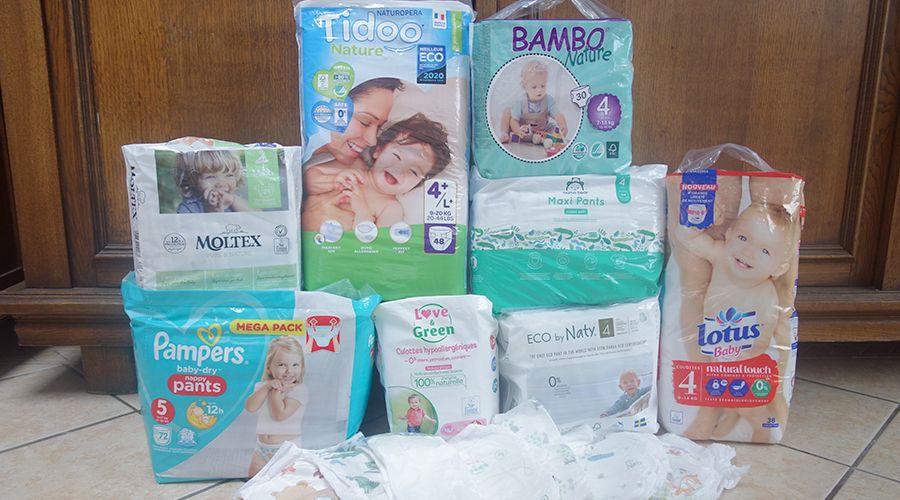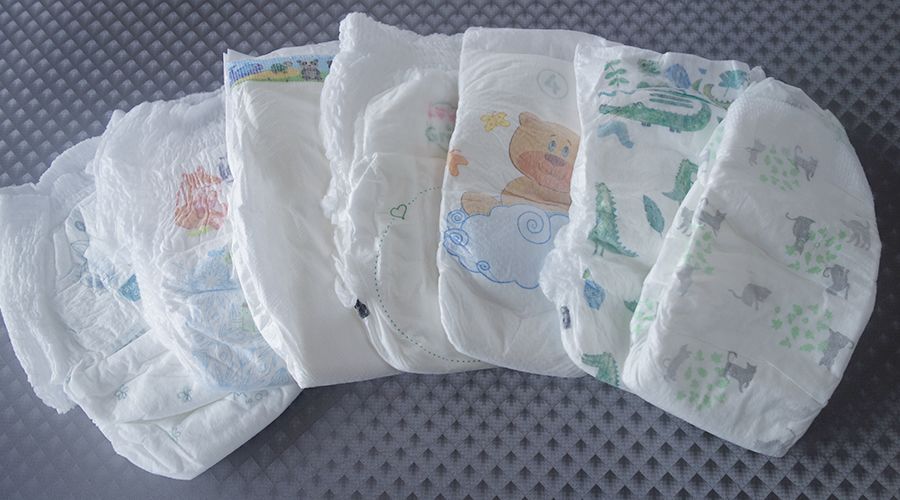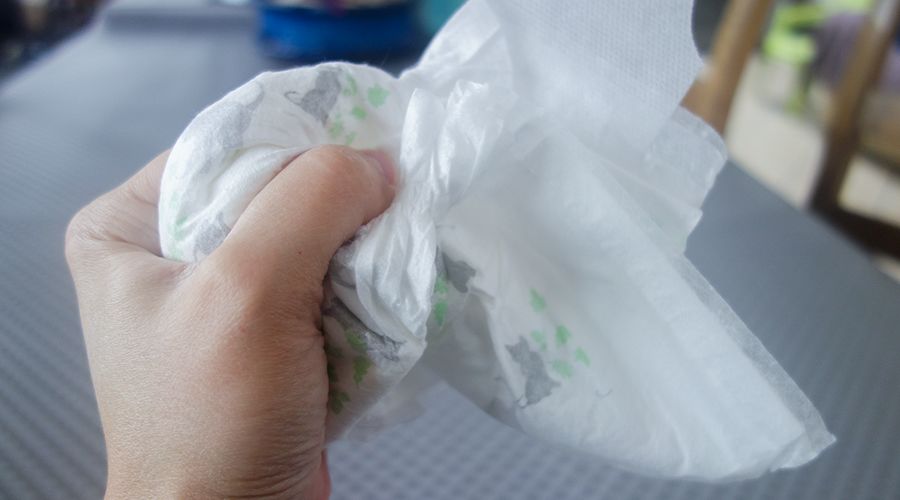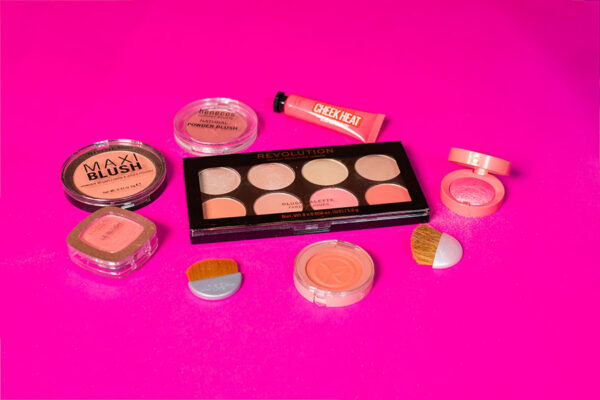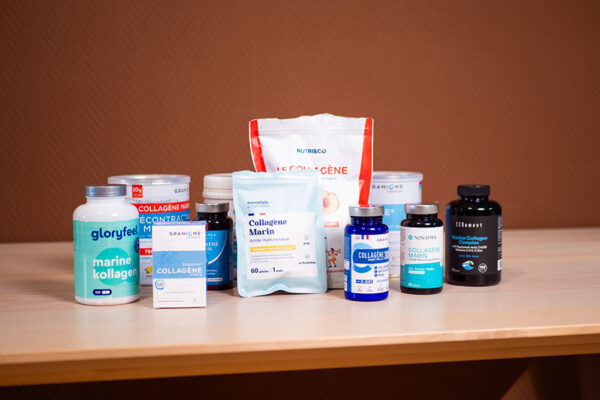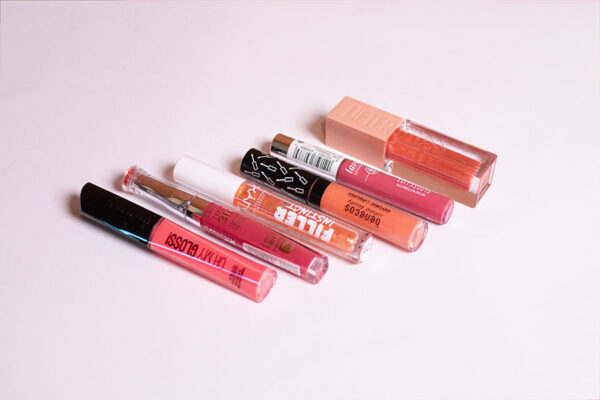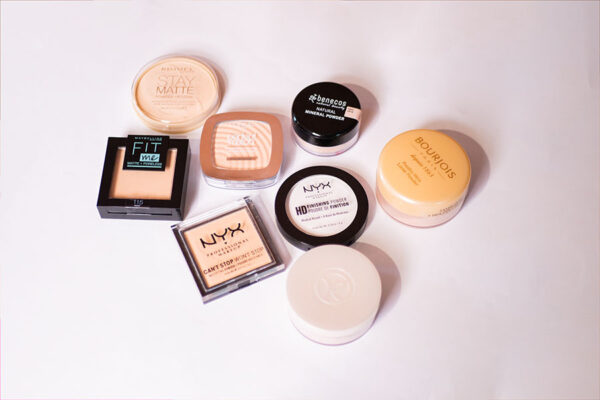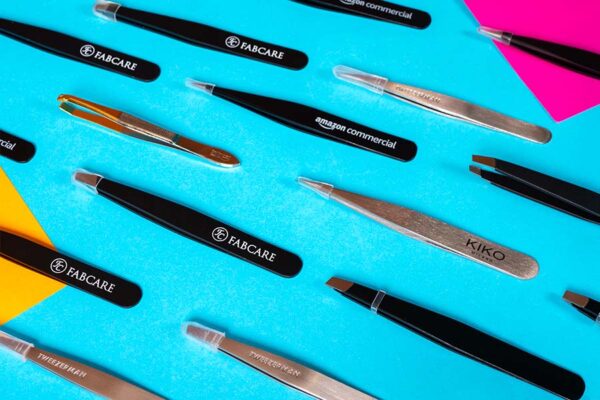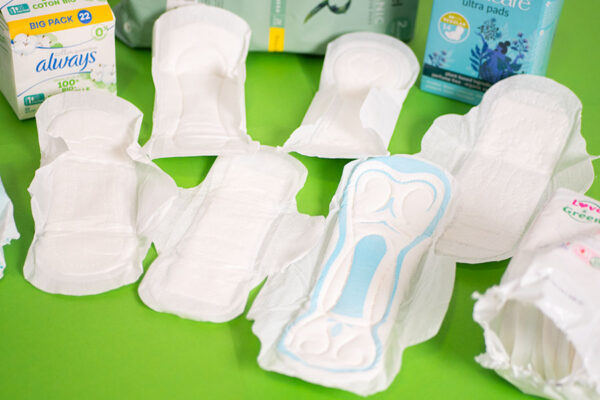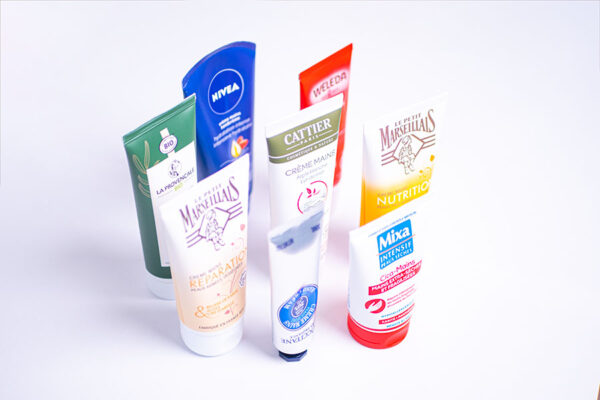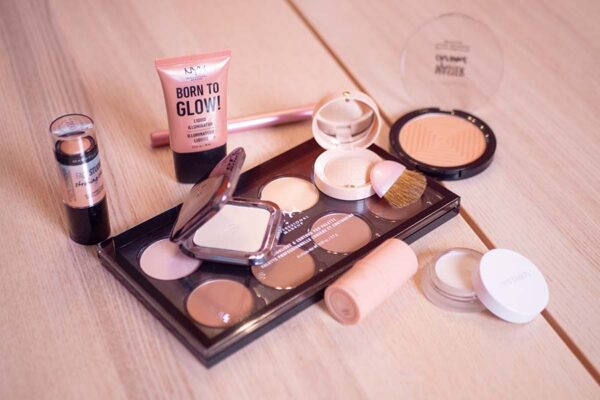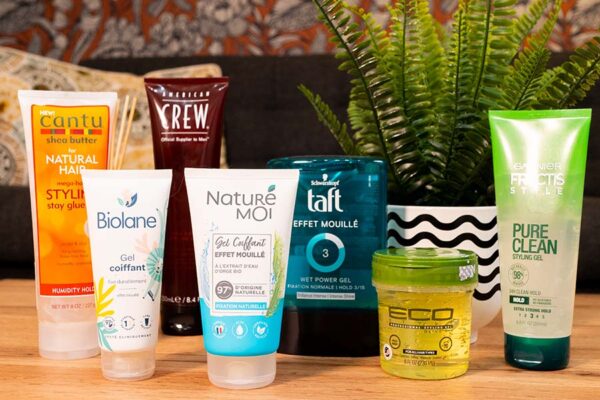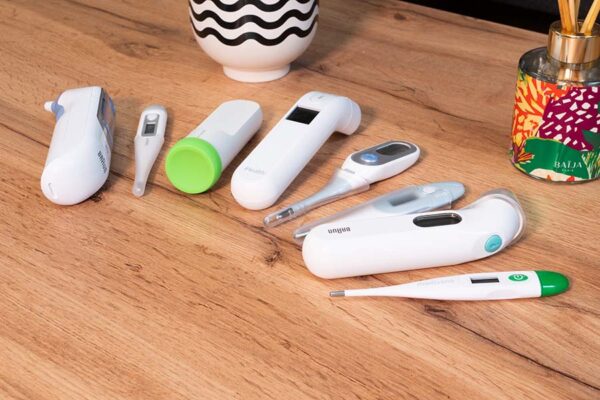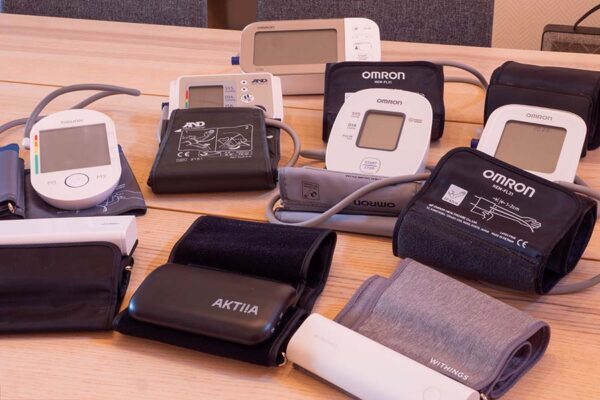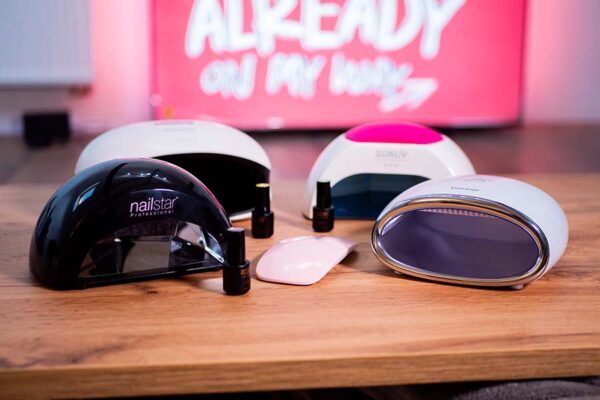Updated on 13 April 2023
Combining mostly natural materials with a total transparency on the composition of its nappies, Love and Green proves to be very convincing both in terms of absorption and comfort. Love & Green (46 Nappies)
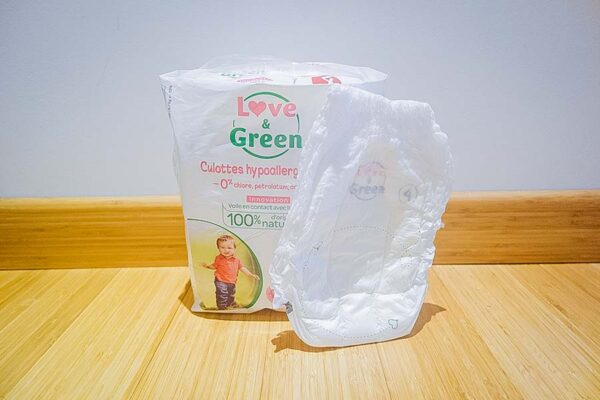
During our research, the opinions of users were not unanimous, but during our tests, these nappies proved to be the most convincing, with good absorption and above all an incomparable softness at the level of the elastics (waist and thighs), thus giving an optimal comfort. The absorbent pad is composed of several absorption layers that allow for a better distribution of the absorbed liquid. In our tests, they proved to be effective, the inside of the nappy being barely damp with 30 ml of water absorbed.
Pampers nappies are very strong and absorbent. The materials used are soft to the touch, especially in the waistband, and retain humidity effectively. Pampers Baby Dry (160 Nappies)
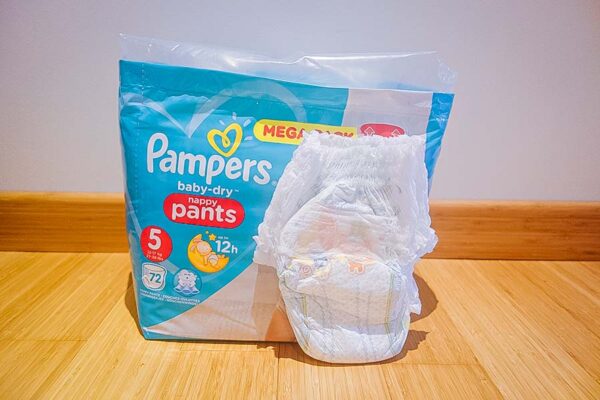
Historically the leader in the field of baby nappies, Pampers has seen its image somewhat shaken by the recent controversies regarding the composition of its products. However, the brand has made great efforts to inform the public lately, and can only be credited with the strength, comfort and absorbency of its nappies. The moisture indicator and the umbilical cut-out are also small details that are appreciated in the sizes dedicated to newborns.
The Pure and Nature nappies from Moltex are very environmentally friendly. They are comfortable and provide a good support, without a plastic effect but soft to the touch. Moltex Pure & Nature (29 Nappies)
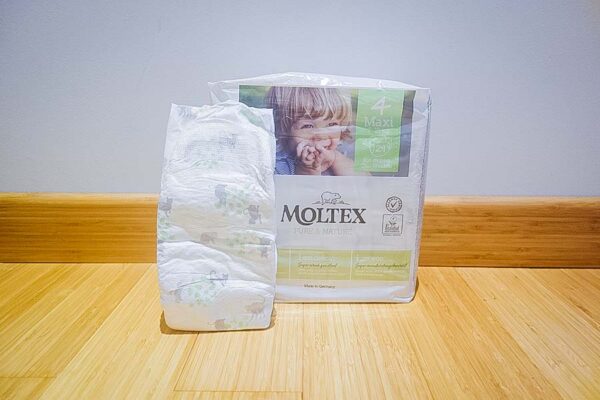
Supported by several labels guaranteeing the quality of the components used, Moltex nappies have a good composition, free of most controversial substances. Almost 50% of the raw materials used in the whole nappy are renewable. The nappies are also convincing in their ecological design, as our tests have shown that the inner cover effectively absorbs unwanted odours, despite its poor liquid absorption capacity.
Easy to put on and take off, Mama Bear nappies are an interesting alternative for small budgets. Beautifully illustrated, they show effective absorption both during day and night. Mama Bear (88 Nappies)
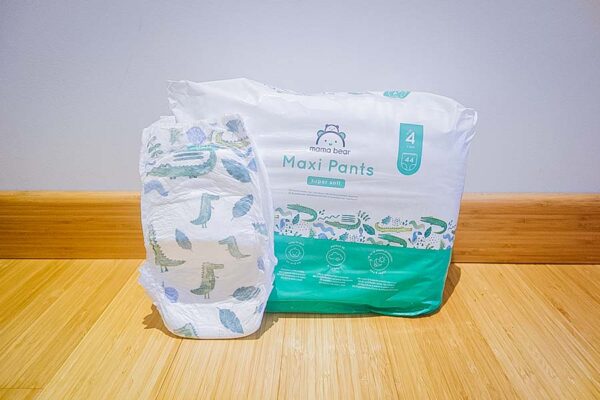
Although they do not particularly stand out for their comfort, the Mama Bear nappies have a strength and flexibility that makes them easy to use. The whole is soft to the touch and, despite their thinness, the nappies showed very satisfactory results in terms of absorption during our tests. The residual humidity is also very low, which guarantees dry, irritation-free bottoms.
Our selection
| Our choice, Best mid-range | Best budget | Best high-end | Budget alternative |
|---|---|---|---|
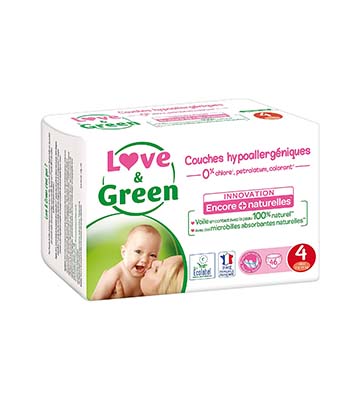 | 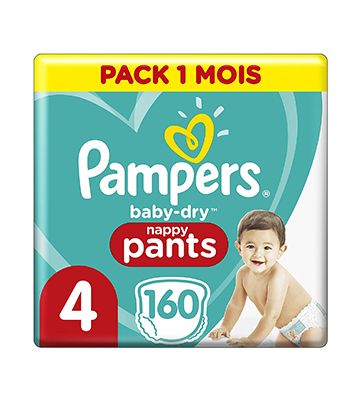 | 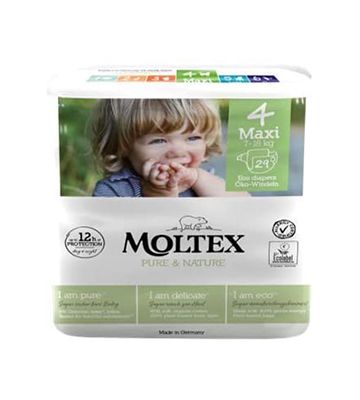 | 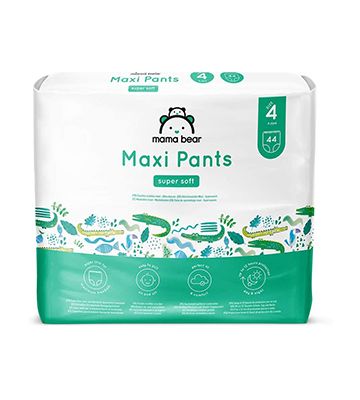 |
| Love & Green (46 Nappies) | Pampers Baby Dry (160 Nappies) | Moltex Pure & Nature (29 Nappies) | Mama Bear (88 Nappies) |
| Combining mostly natural materials with a total transparency on the composition of its nappies, Love and Green proves to be very convincing both in terms of absorption and comfort. | Pampers nappies are very strong and absorbent. The materials used are soft to the touch, especially in the waistband, and retain humidity effectively. | The Pure and Nature nappies from Moltex are very environmentally friendly. They are comfortable and provide a good support, without a plastic effect but soft to the touch. | Easy to put on and take off, Mama Bear nappies are an interesting alternative for small budgets. Beautifully illustrated, they show effective absorption both during day and night. |
| See the price on Amazon | £ 44.99 on Amazon | £ 19.69 on Amazon | £ 12.36 on Amazon |
Selectos compares and tests hundreds of products to help you buy better. We sometimes receive a commission when you buy through our links, which helps fund our work. Learn moreWhy trust us ?
How did we test?
To test the nappies, we worked with two trainee testers, whose weight is equivalent to a size 4 for most brands, to capture their feelings. We started by handling each nappy to assess its thickness, softness, and comfort, as well as its appearance. Although no brand is immune to a manufacturing defect, we did not hesitate to abuse each one, pulling on the closures, in particular, to see how strong and flexible they were.
We then tested their absorption with a syringe filled with water (30 and 60 ml – the capacity of a full bladder at this age) and their resistance to leakage despite various manipulations. We also tested their ability to retain odours and their composition.
How to choose your newborn nappy?
For some time now, nappies have been at the centre of a controversy over their composition, which (until recently) was not subject to very strict regulation.
Since then, the market leaders (Pampers at the forefront) have redesigned their products, but in recent years a new trend has emerged in so-called “green” nappies.
A good alternative, of course, is to switch to reusable nappies, which are more economical and much better for the planet. But not everyone is psychologically ready to take the plunge, and we have to admit that disposable nappies are really practical.
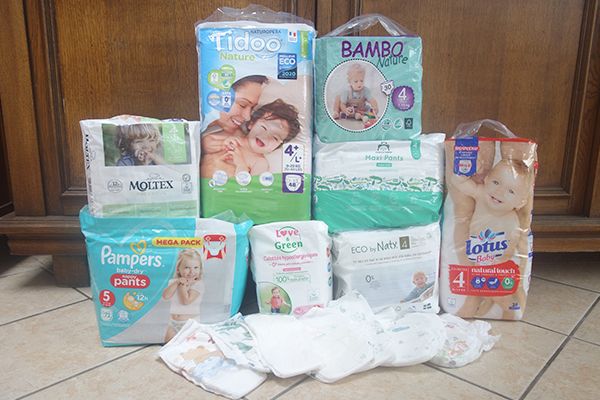
How to make the best choice for your baby’s little bottom? Here are some criteria to consider:
- Comfort: while most parents think of the softness of the inner veil, the flexibility of the outer veil is just as important to ensure your baby can move easily. The fastening system and the elastics must be effective without creating discomfort. Redness in the folds and sharp marks in the skin are easily identifiable signs of an unsuitable nappy.
- Waterproofness: of course, the main interest of a nappy is its ability to hold a large amount of liquid, especially at night. From a practical point of view, the inside of the nappy is usually made up of a cellulose fibre mat and an absorbent powder called SAP (sodium polyacrylate), but its water tightness also depends on the good overall design, with effective leakage barriers (the elastics in the crotch area).
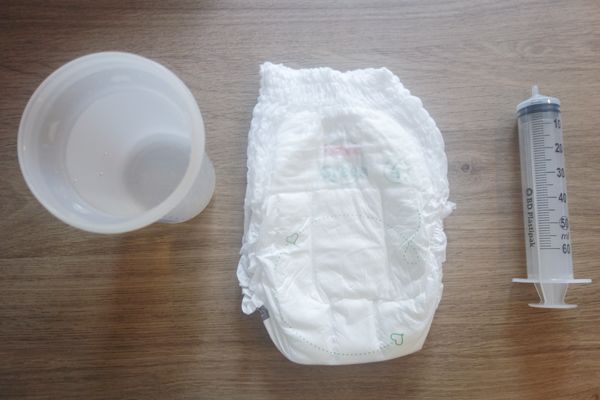
- Composition: highly controversial, it is really difficult to separate the true from the false. Firstly, the presence of petrochemical residues must be put into perspective, as these are generally present in minute quantities. Then, to get to the heart of the matter, it is better to avoid all superfluous substances: lotions, perfumes, dyes and alcohol. Above all, fibres must be bleached without chlorine (marked ‘TCF’). In any case, recent studies have shown that most brands have made significant progress in this area.
- Choice of size: this is easily identified by a number from 1 to 6. Each size corresponds to the most appropriate weight range. Although this may vary slightly from brand to brand, we give it as an indication:
- Size 1: from 2 to 5 kg (from birth to 2-3 months)
- Size 2: from 3 to 6 kg (from birth to 3-4 months)
- Size 3: from 4 to 9 kg (from 3 to 10 months)
- Size 4: from 7 to 18 kg (from 6 months to 3 years)
- Size 4+: from 9 to 20 kg (10 months +)
- Size 5: from 11 to 25 kg (18 months +)
- Size 6: from 15 kg (2,5 years +)
You should also be aware that the price of a nappy increases proportionally with its size. Sizes 1 and 2 are the cheapest, but you use more of them than sizes 4 to 5. The cost is therefore to be evaluated over a long period of time, usually one month.
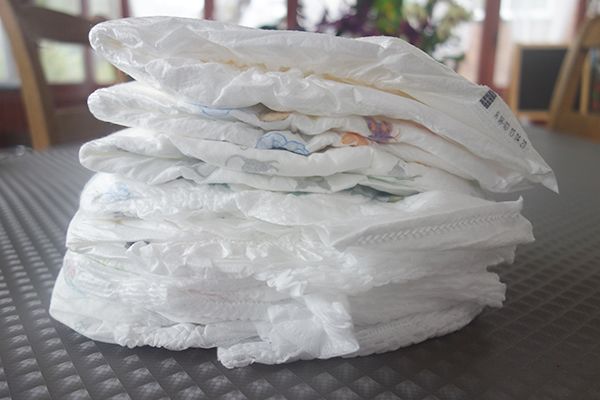
Other baby nappies we recommend
Tidoo (£22.85 the pack of 24 nappies upon publication): effective, but can be improved. Made in France, these 50% biodegradable nappies are widely acclaimed by parents for their absorption capacity. During our tests, we nevertheless noticed a certain lack of flexibility (with a very plastic feel) and an absorption that, although effective, directly impacts the thickness of the nappy, becoming almost embarrassing for the child wearing it. It also does not retain odours in an optimal way. Effective, yes, but definitely not the best.
Eco by Naty (£35.10 the pack of 156 nappies upon publication) : efficient ecological nappies. Naty is environmentally friendly, both in its nappies and in its packaging (made of biosourced plastic), and offers organic nappies that are effective from an absorption point of view. However, our tests confirm the opinion of many users who find the nappy rather rough to the touch. Surprisingly, this is not the case for diapers, which are really soft and comfortable. Let’s hope that the brand will standardise its products and that they will soon be part of our main selection…
Other tested baby nappies
Bambo Nature (£6.39 for 24 nappies upon publication): recurrent leakage problems. During our tests, we observed that these nappies were quite rough, which is not optimal for baby’s comfort. In addition, the absorption is not the best and we noticed frequent leakage problems.
Lotus Baby Touch: No longer produced by the brand. These nappies come with an elastic band on the baby’s back. In our tests, the absorbency was generally good. We liked the little designs on each nappy. However, we regretted the slight chemical smell that we smelled when we used them.
Translated by Ramsés El Hajje
